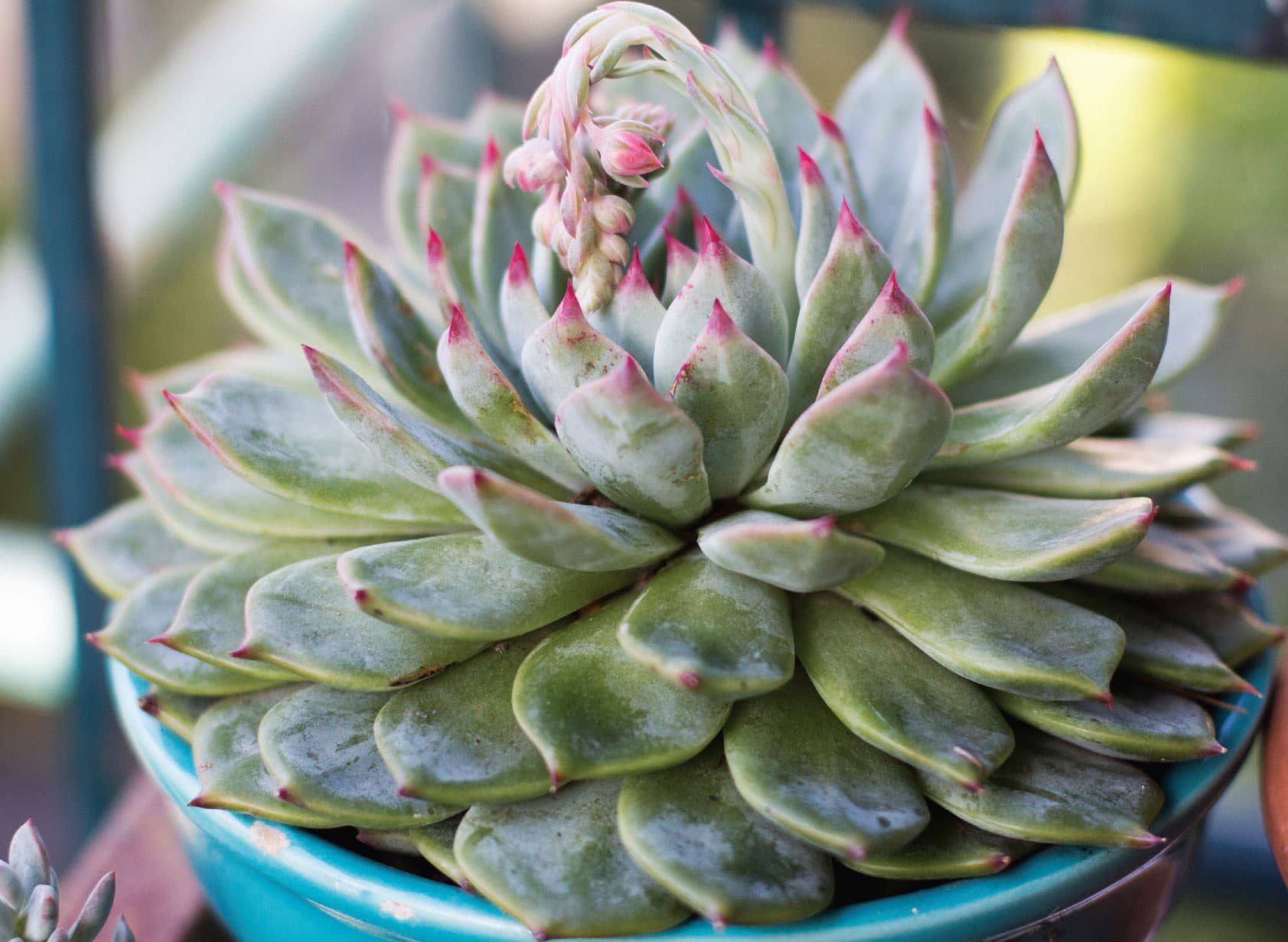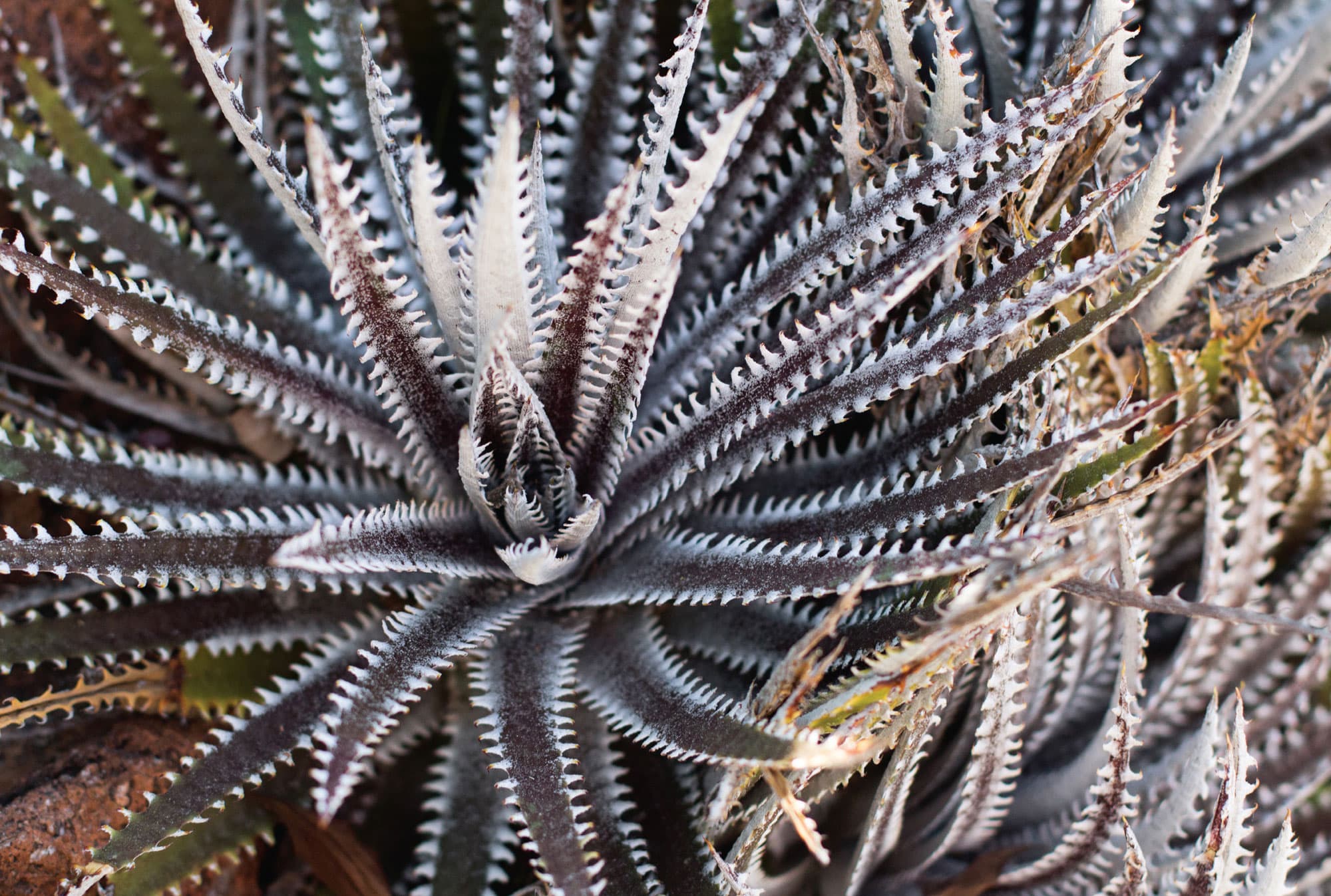
INTRODUCTION
More Than Hens and Chicks
It once was the case that when most people thought of succulents for the home, they thought of “Aunt Jenny’s jade plant.” But the ubiquitous jade, Crassula ovata, is just the beginning of a limitless array of varieties of tough plants available to indoor and outdoor gardeners. Because they are beautiful, unique, and nearly indestructible if not overwatered, cactuses and other succulents are exploding in popularity. In areas of unreliable water availability, like the Southwest, a wide selection of sizes and striking architectural features add interest and excitement to both home and commercial landscapes.
So, while cactuses and succulents have captivated the botanical community for several centuries, their versatility has now ensconced them into the trendiness of the twenty-first-century plant scene. Hens and chicks, Sempervivum spp., have been perennial favorites for years in climates as cold as northern Montana and are presently available in more than three thousand cultivars. Today, the emergence of online shopping has helped hobbyists around the country gain access to more exotic succulents that, though not cold hardy, are happy to spend summers outside and overwinter indoors. Although tender leafy plants are often damaged during shipping, succulents are advantageously equipped to withstand shipment abuse and arrive unscathed at their destinations.

Unusual and attractive curly leaf Agave.
Both the popularity of container gardening and online marketing have skyrocketed the popularity of succulents, elevating the humdrum world of hens and chicks and other prosaic perennials into stylish plant swank. This trend is here to stay as environmentally conscious gardeners remake their corners of the planet.
SUCCULENTS OUTSIDE AND IN
Indoor plant enthusiasts often daydream about the “ideal” houseplant: something that comes in interesting shapes, has attractive flowers, can withstand the low humidity of winter indoors, thrives with minimal care, and still evokes gasps of admiration from visitors. By these criteria, the “ideal” plant is a succulent. The emergence of cell phone technology has allowed millennials, in particular, to be credited with boosting succulent popularity. The main reason? Succulents look great on camera. The hashtag #succulents has over six million posts on Instagram alone!

Gasteraloe in a rock garden.
Generally, succulents are water-thrifty plants that are adapted to dry environments in which the leaves, stems, or roots have become unusually fleshy from the development of water-storing tissue. Plants adapted to living in dry environments, such as succulents, are known as xerophytes—from the Greek xero (dry) and phyton (plant). However, not all xerophytes are succulents, because there are other ways of adapting to a shortage of water, such as by developing small leaves that may roll up or by having leathery rather than succulent leaves. Nor are all succulents xerophytes, because plants like swamp stonecrop, Crassula helmsii, are both succulent and aquatic.
Succulents come in a plethora of styles, sizes, and colors. With so many varieties available, the authors hope that this book can be used as a simple yet comprehensive reference tool for growing succulents, with tips on watering, fertilizing, and basic maintenance. Succulent growing can be addictive, and if you are not careful, you are likely to get “hooked” (especially when handling cactuses)!

Echeveria hybrid with emerging inflorescence.

A beautiful black and silver dyckia.